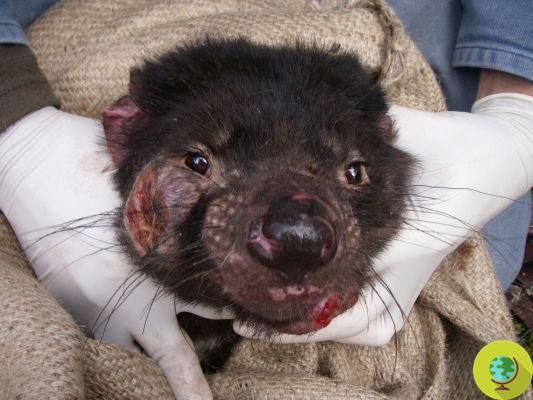
Defending against a lethal pathology by changing: This is what, according to a study by Washington State University, is happening to the Tasmanian devils, whose genetic code is evolving to resist a contagious and particularly dangerous form of cancer.
He is about to end up run over, his mother saves him
Defending yourself from a lethal pathology by changing: that's what, according to a study by Washington State University, is happening to Tasmanian devils, whose genetic code is evolving to resist a contagious and particularly dangerous form of cancer.
In an article published in Nature Communications, an international team of scientists led by the biologist Andrew Storfer points out how some Tasmanian devil populations have put one in place rapid evolutionary response to cope with the so-called devil's facial tumor (DFTD), a transmissible form of cancer, of non-viral origin, which affects only this species. If contracted, this type of cancer has a mortality of nearly 100%: it is therefore a very serious pathology, which jeopardizes the survival of the entire species.
Tasmanian devils are the largest carnivorous marsupials in the world and belong to the natural heritage of Australia, living exclusively, as the name suggests, in the island state of Tasmania. Individuals of this species are often very aggressive towards each other, with behaviors that also include biting on the face. Precisely this habit would favor the spread of DFTD, one of the three forms of contagious cancer known to scholars, and by far the most dangerous. Since it was first detected in 1996, this tumor has already killed 80% of the Tasmanian devil population, starting the species on the slope of a probable extinction.
READ also: 6 technologies that help endangered species
In the last twenty years, however, scientists have also observed how, within the same groups in which the disease rages and persists, some individuals continue to survive without becoming ill: this observation has led them to wonder if, in their survival, there is it was by chance a genetic component. The study just published confirms this hypothesis, highlighting how, in some individuals of the species, one is evolving genetic resistance to DFTD. An authentic self-defense deployed by nature, in short, to prevent the Tasmanian devils from disappearing from the face of the Earth.
"If a disease enters a group and kills 90% of individuals, it can be assumed that that 10% of survivors are somehow genetically different." - explained one of the co-authors of the study, Paul Hohenlohe, a biologist at Idaho University - "What we set out to look for were the parts of the genome that show this difference."
The researchers were able to draw on an extensive sampling of Tasmanian devil DNA, before and after the outbreak of the DFTD epidemic, collected and preserved over the years by the ecologist Menna Jones, co-author of the study, and his research team at the University of Tasmania. By comparing the samples, the scholars were able to identify two small genomic regions that showed significant variation. Variations that, it must be said, have yet to be investigated but which have allowed scientists to argue that the Tasmanian devil is gearing up to face the disease through rapid evolution.
"Our study instills some hope regarding the survival of the Tasmanian devil in the face of this devastating disease." - concludes in this regard the Prof. Andrew Storfer - "Ultimately, [this study, ed.] Can also help guide future research to address important issues related to the evolution of cancer transmissibility and what causes remission and recurrence in cancer and other diseases."
Lisa Vagnozzi
Photo credits


























